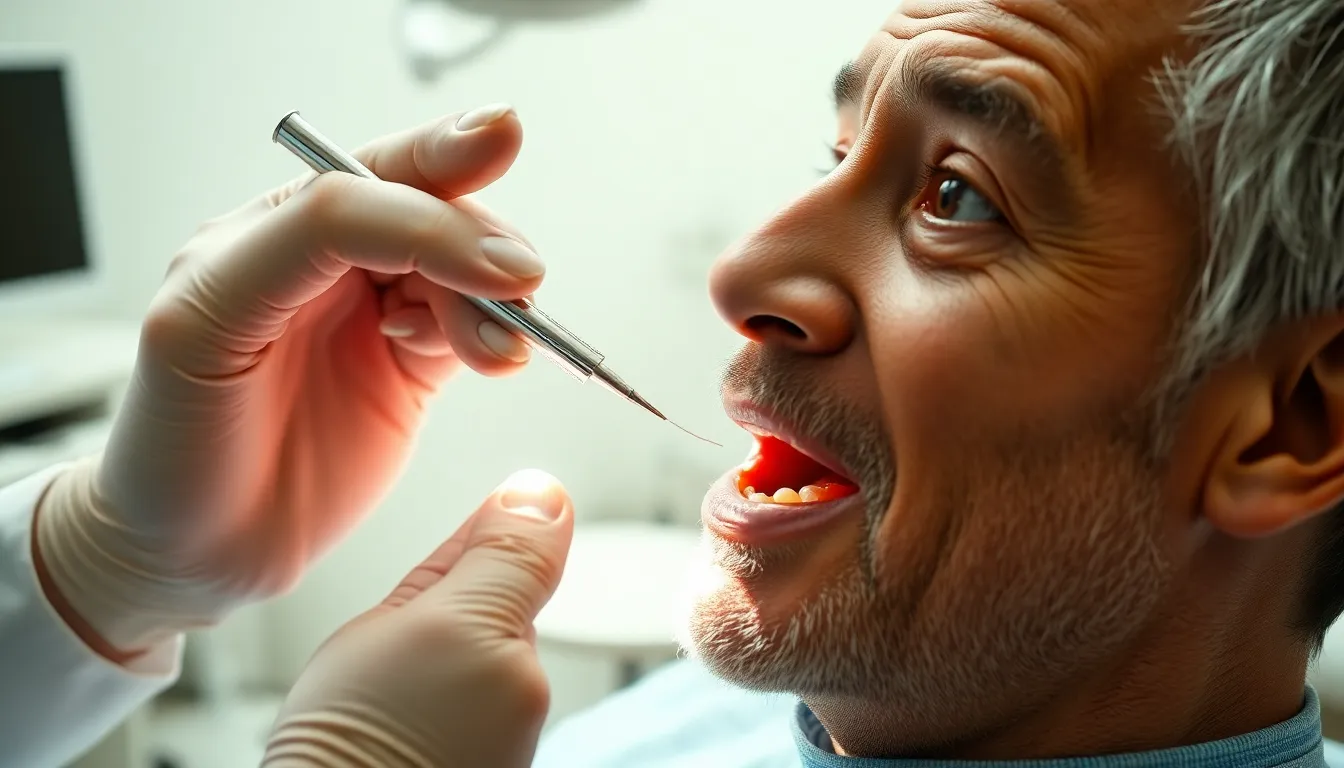Ever noticed your gums hurt after flossing? This common issue affects many people who are trying to maintain good oral hygiene. While flossing is essential for removing plaque and food particles, it shouldn’t leave you in pain.
If you’re experiencing gum pain after flossing, it could signal several issues—from improper technique to underlying gum disease. The discomfort might be temporary for beginners, but persistent pain deserves attention. Understanding why your gums hurt and learning proper flossing methods can help you maintain healthy teeth and gums without the unwelcome soreness.
Understanding Gum Pain After Flossing
Gum pain after flossing is a common experience that’s often misunderstood. Your gums might feel tender, swollen, or even bleed slightly when you incorporate flossing into your oral hygiene routine. This discomfort typically occurs because the floss disturbs bacteria that have accumulated along the gumline, causing a temporary inflammatory response.
Many patients express concerns similar to Sarah, who visited our practice last month. “I started flossing daily as recommended, but my gums hurt and bleed every time. I’m worried I’m doing more harm than good,” she explained. Dr. Todd B. Harris reassured her that some initial discomfort is normal when starting a regular flossing routine, but persistent pain requires attention.
Several factors contribute to gum pain after flossing:
- Improper technique: Snapping floss forcefully against gums creates trauma
- Infrequent flossing: Gums become sensitive when flossing isn’t regular
- Gingivitis: Early gum disease causes inflammation and bleeding
- Aggressive flossing: Too much pressure damages gum tissue
- Existing dental issues: Infections or impacted food can cause localized pain
Healthy gums adapt to regular flossing within 1-2 weeks. Persistent pain beyond this timeframe signals potential underlying issues that need professional evaluation. The relationship between flossing technique and gum health can’t be overstated – gentle yet thorough motions clean effectively without causing unnecessary trauma.
Common Causes of Gum Pain When Flossing

Gum pain after flossing stems from several distinct causes that affect your oral health. Understanding these factors helps you address the root problems and improve your flossing experience. Let’s examine the most common reasons behind this uncomfortable sensation.
Improper Flossing Technique
Flossing with excessive force traumatizes delicate gum tissue, leading to pain, inflammation, and bleeding. Many patients snap the floss harshly between teeth rather than using gentle, controlled movements. Dr. Todd B. Harris often tells patients, “I see countless cases where people floss like they’re sawing wood, which damages gums instead of helping them.” Using a gentle back-and-forth motion prevents injury while still effectively removing plaque. Your technique matters significantly—angle the floss slightly against each tooth and curve it around the tooth structure rather than pressing directly into the gum line.
Gingivitis and Gum Disease
Inflamed gums from gingivitis or periodontitis become tender and prone to bleeding during flossing. Plaque buildup along the gum line causes this inflammation, making even gentle flossing uncomfortable. Lisa, a 42-year-old patient, shared: “I avoided flossing because it always hurt and bled, not realizing that was actually a sign I needed to floss more consistently.” Red, swollen gums indicate unhealthy tissue that requires professional attention. Your dentist might recommend a professional cleaning to remove hardened plaque (tartar) that can’t be eliminated through at-home care alone.
New Flossing Routine
Starting a flossing routine after a period of neglect typically causes temporary discomfort as your gums adjust. Healthy gums adapt to regular flossing within 1-2 weeks, with pain and bleeding gradually subsiding. Consistency proves crucial during this adaptation period—daily gentle flossing allows your gum tissue to strengthen and become less sensitive over time. Your persistence pays off as the initial tenderness transitions to healthy, resilient gums that respond positively to flossing. Some patients find waxed floss or dental tape more comfortable during this transition period, creating less friction against sensitive gum tissue.
When Gum Pain After Flossing Is Normal

Adjusting to a New Flossing Routine
Experiencing mild gum pain when you’ve just started flossing is completely normal. Your gums need time to adapt to this cleaning process, especially if you’re new to flossing or have taken a break from regular dental care. Initial sensitivity typically improves within 3-5 days as long as you continue gentle, consistent flossing. Many patients report that the discomfort diminishes noticeably after the first week of daily flossing.
Dr. Harris often tells his patients, “I see this frequently in my practice. One patient came in concerned about bleeding gums after starting to floss regularly. I reassured her that some initial discomfort is expected as the gums strengthen, and within two weeks, her gums stopped bleeding entirely and felt much healthier.”
Recovering From Plaque Buildup
Gum pain sometimes occurs because you’re removing plaque and food particles that have been irritating your gum tissue. This removal process can cause temporary soreness as your gums begin healing from previous irritation. The discomfort you’re feeling might actually be a sign that the flossing is working effectively, clearing out harmful bacteria along the gumline. Your gums are essentially recovering from the inflammatory response triggered by plaque buildup.
Temporary Sensitivity From Proper Technique
Using the correct flossing technique can still cause mild discomfort at first. Gentle back-and-forth motions while forming a C-shape around each tooth may create temporary sensitivity as your gums become accustomed to this thorough cleaning. This sensitivity differs from the sharp pain caused by aggressive flossing. Patients who floss once daily typically find their gums toughen up within 7-14 days, resulting in less sensitivity during each flossing session.
Signs Your Gum Pain Is Normal
Your gum discomfort after flossing is likely normal if:
- Pain decreases after 1-2 weeks of consistent flossing
- Bleeding reduces with each flossing session
- Gum color improves from red to pink
- Swelling diminishes gradually
- Pain is mild rather than severe or throbbing
When to Be Concerned About Post-Flossing Pain

While some discomfort when flossing is normal, certain symptoms indicate a need for professional dental care. Recognizing these warning signs helps prevent minor issues from developing into serious oral health problems.
Signs of Infection
Throbbing pain that persists after flossing may signal an infection requiring immediate attention. Watch for swelling around a exact tooth or area of your gums, which often accompanies infection. A bad taste in your mouth that doesn’t go away or the presence of pus indicates a possible abscess forming beneath the gum line. Fever alongside oral pain represents a serious concern, as infections can spread beyond your mouth and affect your overall health. Dr. Todd B. Harris notes, “I’ve treated patients who ignored persistent pain after flossing only to discover they had developed an abscess that required urgent intervention. Early detection of these symptoms can prevent more invasive treatments later.”
Persistent Bleeding
Gums that continue to bleed even after several days of regular flossing warrant dental evaluation. Healthy gums typically adapt to routine flossing within one to two weeks, so ongoing bleeding beyond this timeframe suggests underlying gum disease. Bright red, puffy gums that bleed easily during brushing and flossing indicate gingivitis, an early stage of periodontal disease. Blood appearing in your saliva throughout the day, not just during oral care, points to more advanced gum issues. One patient shared, “I noticed my gums bled every time I flossed for nearly three weeks straight. My dentist diagnosed early periodontitis and created a treatment plan that saved my teeth from further damage.”
Additional concerning symptoms include severe pain that interferes with eating or speaking, receding gums that expose tooth roots, and loose teeth. Pain that radiates to your jaw, ear, or head might indicate an infection spreading through facial tissues. Any unusual symptoms persisting for more than 5-7 days even though proper flossing technique deserve professional assessment to rule out serious conditions.
How to Prevent Gum Pain After Flossing

Preventing gum pain after flossing requires adopting gentle techniques and selecting appropriate tools for your exact needs. With consistent practice and proper methods, you’ll maintain healthy gums without the discomfort that often accompanies flossing.
Proper Flossing Techniques
Gentle flossing motions significantly reduce gum irritation and pain. Guide the floss between teeth using a soft back-and-forth motion rather than forcing it through, which can damage delicate gum tissue. Curve the floss around each tooth in a C-shape, carefully cleaning along the gumline without applying excessive pressure. Daily flossing removes plaque buildup before it hardens into tartar, but over-flossing can irritate gums unnecessarily. Dr. Todd B. Harris notes, “Many patients press too hard against their gums while flossing, causing micro-injuries that lead to inflammation and bleeding. I recommend my patients use light pressure and focus on proper technique rather than aggressive cleaning.”
Treating Sore Gums After Flossing

Sore gums after flossing can be effectively addressed with both home care strategies and professional dental interventions. The right approach depends on the severity and underlying cause of your gum discomfort.
Home Remedies
Adopting a gentle flossing technique forms the foundation of at-home care for sore gums. Slide the floss carefully between teeth in a C-shape motion around each tooth rather than snapping it downward, which prevents additional trauma to sensitive gum tissue. Consistency matters tremendously—daily flossing gradually reduces inflammation as your gums adapt and become healthier over time. “Many of my patients experience important improvement in gum sensitivity within two weeks of establishing a consistent, gentle flossing routine,” notes Dr. Todd B. Harris.
Choosing appropriate floss types can make a substantial difference in your comfort level. Waxed floss glides more smoothly between teeth, while dental tape offers a wider, softer surface that’s less likely to cut into gum tissue. Alternative interdental cleaning tools like water flossers or interdental brushes often provide relief for those with particularly sensitive gums.
Warm salt water rinses (½ teaspoon salt in 8 oz warm water) serve as an effective, accessible remedy that soothes inflammation and reduces bacteria population in the mouth. Maintaining comprehensive oral hygiene practices—including proper brushing technique and alcohol-free antimicrobial mouthwash—supports gum health by minimizing bacterial buildup that contributes to inflammation.
Professional Treatments
Professional dental examinations and cleanings play a crucial role in addressing persistent gum pain. Dental professionals remove plaque and tartar buildup more thoroughly than home care alone, especially in difficult-to-reach areas where bacteria thrive. Regular professional cleanings every 6 months help prevent gingivitis from developing or progressing.
Treatment for existing gum disease requires specialized professional care. Your dentist might recommend scaling and root planing—a deep cleaning procedure that removes bacteria from below the gumline—for early-stage periodontitis. Advanced cases may require additional periodontal treatments like laser therapy or gum surgery.
Dental infections causing gum pain demand immediate professional attention. Symptoms such as localized throbbing pain, swelling, or persistent bad taste might indicate an abscess requiring antibiotic treatment, drainage, or even root canal therapy. “I recently treated a patient who thought her gum pain was simply from starting to floss again, but examination revealed a small abscess that needed prompt intervention,” shares Dr. Harris.
Poorly fitting dental restorations often contribute to gum irritation during flossing. Your dentist can adjust or replace problematic crowns, bridges, or fillings that create rough edges or gaps where floss catches and irritates gum tissue. This adjustment typically provides immediate relief and prevents further irritation when flossing.
Conclusion
Flossing shouldn’t be a painful experience but rather an essential part of your oral health routine. With patience and proper technique you can overcome temporary discomfort that might occur when establishing a flossing habit.
Remember that mild soreness and minimal bleeding typically subside within two weeks as your gums adapt and strengthen. But persistent pain bleeding or swelling warrant a dental visit to rule out underlying issues.
By adopting gentle flossing methods using appropriate tools and maintaining consistency you’ll develop healthier gums that respond positively to regular care. Your commitment to proper flossing now will reward you with improved oral health and pain-free dental hygiene for years to come.
Frequently Asked Questions
Is it normal for gums to hurt when flossing?
Some discomfort when you first start flossing or resume after a break is normal. Healthy gums typically adapt to regular flossing within 1-2 weeks. The initial tenderness or slight bleeding occurs as floss disrupts bacteria along the gumline, causing a temporary inflammatory response. However, persistent pain beyond two weeks may indicate improper technique or an underlying issue requiring dental attention.
How long should gum pain last after starting to floss?
Initial gum sensitivity when starting a flossing routine typically improves within 3-5 days with consistent, gentle flossing. Most people find their gums adapt completely within 7-14 days. If pain persists beyond two weeks of regular, proper flossing, consult your dentist as this could indicate an underlying dental problem requiring professional evaluation.
What causes gums to bleed when flossing?
Bleeding gums when flossing usually indicates inflammation caused by bacteria-laden plaque at the gumline. Common causes include gingivitis, infrequent flossing, aggressive flossing technique, or periodontitis. When you first start flossing, some bleeding is normal as you remove built-up plaque, but this should decrease within 1-2 weeks of daily flossing. Persistent bleeding requires dental evaluation.
How can I floss without hurting my gums?
Use a gentle technique by sliding floss between teeth with a soft back-and-forth motion, then curve it around each tooth in a C-shape. Avoid snapping floss against gums or applying excessive pressure. Consider waxed floss or dental tape for sensitive gums. Move slowly and methodically, using clean sections of floss for each tooth. Consistency is key—daily gentle flossing is better than occasional aggressive sessions.
When should I see a dentist about gum pain after flossing?
Consult a dentist if you experience persistent pain or bleeding beyond two weeks of proper flossing, signs of infection (throbbing pain, swelling, bad taste, fever), severe pain affecting eating or speaking, receding gums, or loose teeth. Any unusual symptoms lasting more than 5-7 days despite using correct technique warrant professional evaluation to rule out serious conditions like periodontitis or dental infections.
Can I use alternatives to traditional floss if it hurts my gums?
Yes, several alternatives can be gentler on sensitive gums. Water flossers provide effective cleaning without the friction of traditional floss. Interdental brushes work well for larger spaces between teeth. Soft picks and floss holders can make the process easier and more controlled. Floss designed for sensitive gums, like waxed or tape varieties, may also cause less discomfort while still effectively removing plaque.
How can I treat sore gums after flossing?
Rinse with warm salt water (1/2 teaspoon salt in 8 oz warm water) to reduce inflammation and kill bacteria. Apply a cold compress outside your mouth for 5-10 minutes to reduce swelling. Consider over-the-counter pain relievers if needed. Continue gentle flossing—stopping completely can worsen gum health. Use an antimicrobial mouthwash to help reduce bacteria. If soreness persists beyond a few days, consult your dentist.
Does flossing help improve gum health over time?
Absolutely. Regular, proper flossing removes plaque and food particles from areas toothbrushes can’t reach, reducing bacteria that cause inflammation and gum disease. While gums may be sensitive initially, consistent flossing strengthens them over time. Most people notice firmer, less sensitive gums with reduced bleeding after 2-3 weeks of daily flossing. This simple habit significantly lowers your risk of gingivitis and periodontitis.







